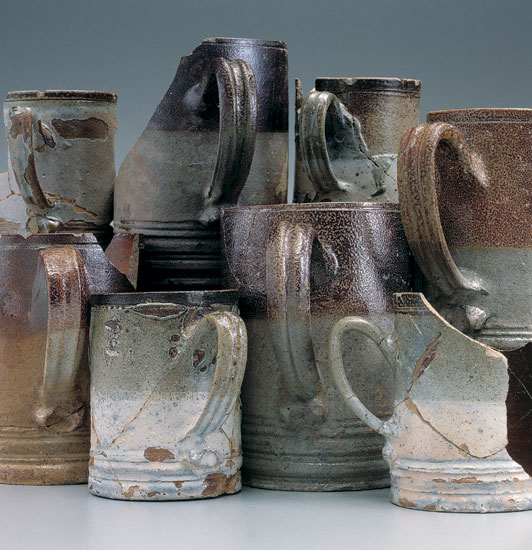
| Figure 44 Mugs, William Rogers, Yorktown, Virginia, 1720–1745. Salt-glazed stoneware. (Courtesy, National Park Service, Colonial National Historical Park, Yorktown Collection.) One of the most common forms produced by William Rogers was the tavern mug. Bisque and glazed earthenware and stoneware were recovered. Earthenware mugs, yellow in color, were dipped in white slip or finished with a green glaze of dark brown or red-brown. Yorktown stoneware mugs were manufactured in the following sizes a few mug bases, large in diameter, were probably one quart in capacity. The stoneware mug (together with the teapot) was the highest quality pot made by the “poor potter.” Its appearance and excellent potting rivaled those made in England; in fact, more time and care were spent making the Yorktown mugs, as they were the only form fired in saggars. Thirteen small stoneware mugs, each 3 1/2" high and 2 1/2" in diameter, appear to have been test pieces; all were found in association with the Small Kiln. Several show one or more slashlike incisions and some show evidence of a white slip, which in some cases had clearly peeled off the mugs but in others had produced a smooth white “glaze” under the salt glaze. | |
|
|
|